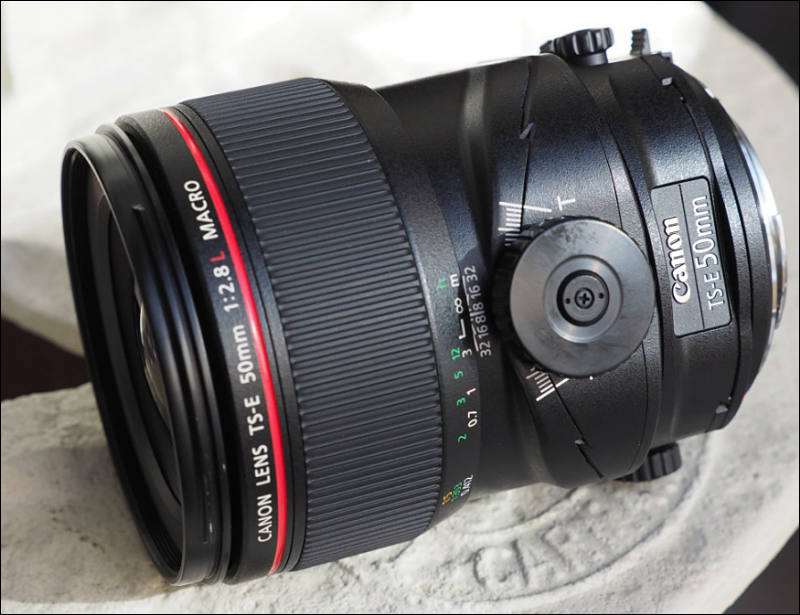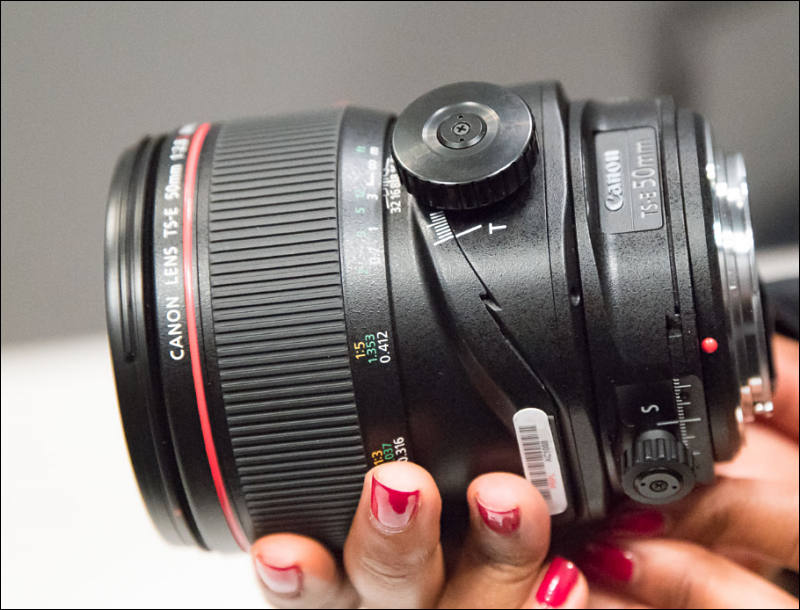
-
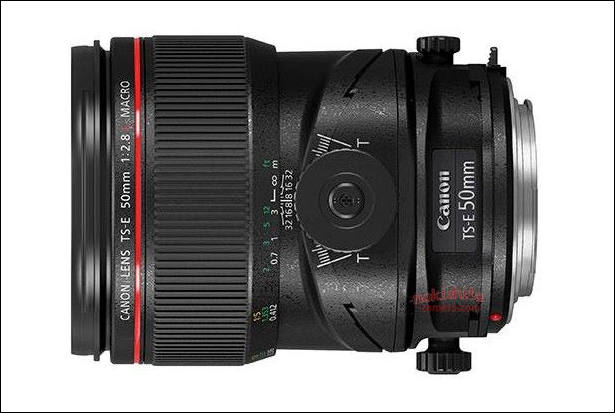
Specs
- 12 lenses in 9 groups (2 UD lenses)
- SWC, ASC, fluorine coating
- 9 diaphragm blades
- Min focus distance - 27.3cm
- 77mm filters
- 86.9 × 114.9mm
- 945 g
- Available for $2199
- Preorders
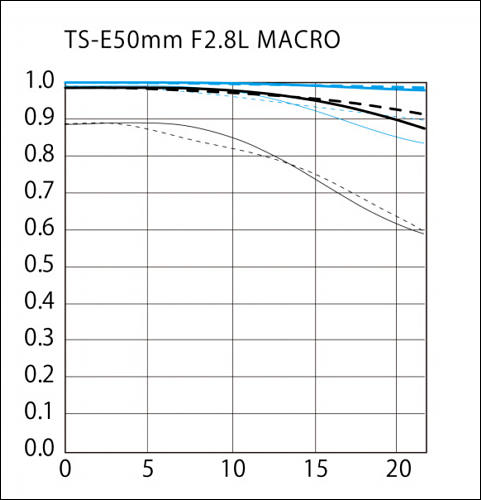
-
Updated, pricing added.
-
PR
Tilt-Shift lenses have several applications for suitable photographers because of their ability to provide enhanced creative control over perspective through the tilt function and depth-of-field through the shift function in their images. This ability can be optimal when photographing landscapes, portraits, and architecture.
The image quality derived from Canon Tilt-Shift lenses has evolved considerably since their first inception several years ago. Enhanced optical elements like molded aspherical glass and UD lenses are at the core of the new Canon TS-E 50mm f/2.8L Macro lens, TS-E 90mm f/2.8L Macro lens and TS-E 135mm f/4L Macro lens. These features provide users with edge-to-edge resolution, improved image quality over previous Canon TS-E lenses and minimum distortion. Canon also included two anti-reflective coatings, SubWaveLength Structure Coating (SWC) in the TS-E 50mm f/2.8L and TS-E 135mm f/4L Macro lenses and Air-Sphere Coating (ASC), into the TS-E 50mm f/2.8L and TS-E 90mm f/2.8L Macro lenses. SWC helps to reduce flare and ghosting, while ASC is a new technology that provides amazingly high, anti-reflective performance, particularly when alleviating incidental light that can enter a lens.
The new Canon Tilt-Shift lenses also offer improved operability over previous models, including larger tilt, shift-and-lock knobs, lock-release button and a new tilt-locking mechanism that firmly locks the lens in the zero-tilt position to help prevent unintended tilting to increase more precise shooting capabilities. The rotation of the tilt-shift lenses also allows users to freely change the axis of tilt movement and shift from right angles to parallel to better adapt to various shooting conditions and situations.
The new Canon TS-E 50mm f/2.8L Macro lens, TS-E 90mm f/2.8L Macro lens and TS-E 135mm f/4L Macro lenses are scheduled to be available November 2017 for an estimated retail price of $2199.00
-

 sa540.jpg800 x 531 - 109K
sa540.jpg800 x 531 - 109K -

 sa553.jpg800 x 531 - 97K
sa553.jpg800 x 531 - 97K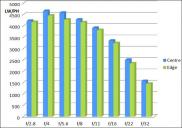
 sa552.jpg662 x 466 - 51K
sa552.jpg662 x 466 - 51K -

 sa1203.jpg800 x 532 - 73K
sa1203.jpg800 x 532 - 73K -
Review
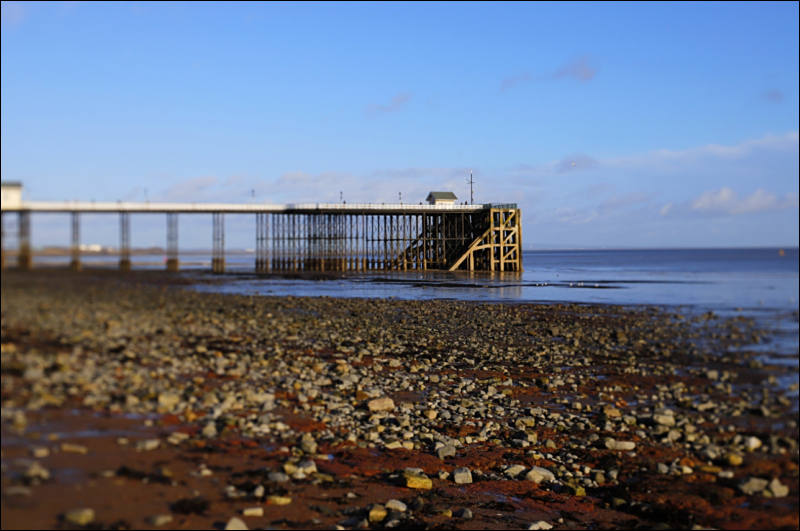
Lens is most sharp between f/4 and f/11, but is still very sharp at f/2.8, and f/16. Sharpness drops off a little at f/22, being more noticeably soft at f/32. At the edges, you’ll find the sharpest results between f/5.6 and f/16.
http://www.photographyblog.com/reviews/canon_ts_e_50mm_f2_8_l_macro_review

 sa1696.jpg800 x 531 - 72K
sa1696.jpg800 x 531 - 72K -

 sa2430.jpg800 x 524 - 67K
sa2430.jpg800 x 524 - 67K -
Another review

https://www.the-digital-picture.com/Reviews/Canon-TS-E-50mm-f-2.8L-Tilt-Shift-Macro-Lens.aspx

 sa2431.jpg649 x 435 - 33K
sa2431.jpg649 x 435 - 33K
Howdy, Stranger!
It looks like you're new here. If you want to get involved, click one of these buttons!
Categories
- Topics List23,980
- Blog5,725
- General and News1,353
- Hacks and Patches1,153
- ↳ Top Settings33
- ↳ Beginners255
- ↳ Archives402
- ↳ Hacks News and Development56
- Cameras2,362
- ↳ Panasonic991
- ↳ Canon118
- ↳ Sony156
- ↳ Nikon96
- ↳ Pentax and Samsung70
- ↳ Olympus and Fujifilm100
- ↳ Compacts and Camcorders300
- ↳ Smartphones for video97
- ↳ Pro Video Cameras191
- ↳ BlackMagic and other raw cameras116
- Skill1,961
- ↳ Business and distribution66
- ↳ Preparation, scripts and legal38
- ↳ Art149
- ↳ Import, Convert, Exporting291
- ↳ Editors191
- ↳ Effects and stunts115
- ↳ Color grading197
- ↳ Sound and Music280
- ↳ Lighting96
- ↳ Software and storage tips267
- Gear5,414
- ↳ Filters, Adapters, Matte boxes344
- ↳ Lenses1,579
- ↳ Follow focus and gears93
- ↳ Sound498
- ↳ Lighting gear314
- ↳ Camera movement230
- ↳ Gimbals and copters302
- ↳ Rigs and related stuff272
- ↳ Power solutions83
- ↳ Monitors and viewfinders339
- ↳ Tripods and fluid heads139
- ↳ Storage286
- ↳ Computers and studio gear560
- ↳ VR and 3D248
- Showcase1,859
- Marketplace2,834
- Offtopic1,319


